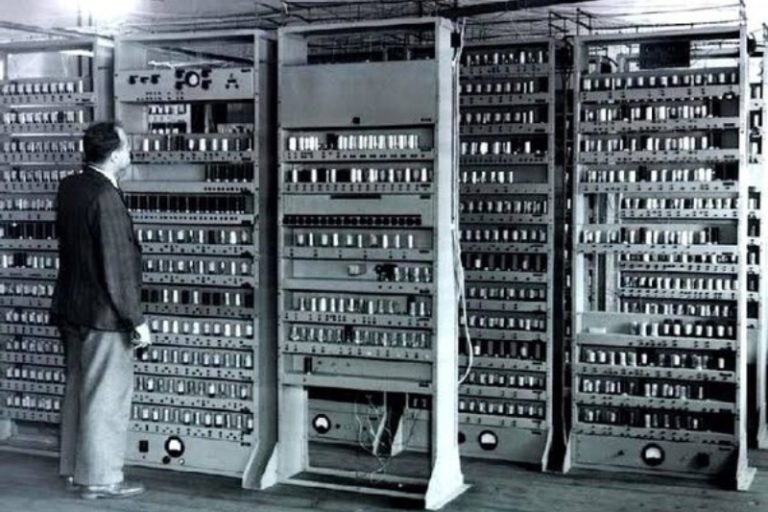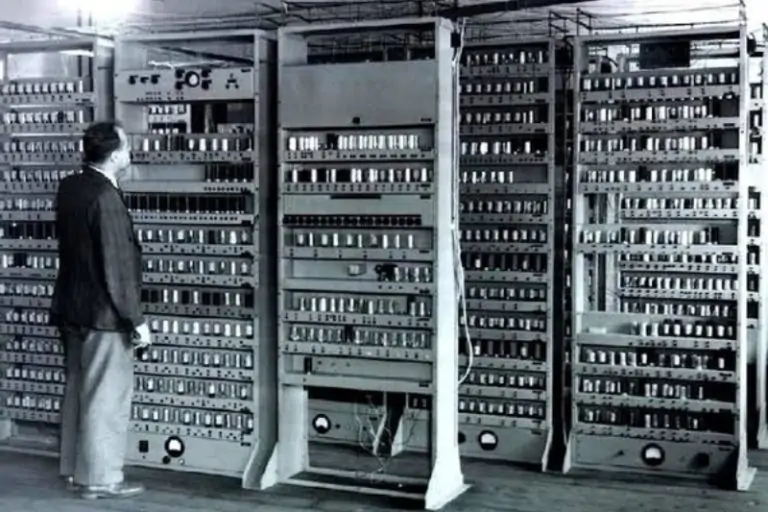

exploring 9 characteristics of the first generation computer
The first generation of computers, created in the late 1940s and early 1950s, signaled the start of the digital revolution and established the framework for contemporary computing. These innovative devices, which were distinguished by their enormous size, constrained processing power, and vacuum tube technology, marked a dramatic breakthrough in human technological progress.
Let’s examine the traits that characterized the initial computer generation and influenced the development of computing history.
First-generation computers relied on vacuum tubes as their primary electronic components. These glass tubes, used for amplifying and switching electronic signals, were large, fragile, and prone to overheating, leading to frequent malfunctions and maintenance issues.
First-generation computers were massive in size, occupying entire rooms and requiring extensive cooling systems to dissipate heat generated by the vacuum tubes. These behemoth machines often filled entire floors of buildings and required specialized facilities for operation.
Due to the slow operation of vacuum tube technology, first-generation computers had limited processing speeds compared to modern-day computers. Basic arithmetic operations that now take microseconds to complete could take several seconds or even minutes on early computers.
First-generation computers primarily utilize batch processing, a method where tasks are grouped and processed sequentially. This approach required users to submit their jobs in advance, with results returned at a later time, making real-time processing impractical.
Input and output devices for first-generation computers included punch cards and paper tape. Users would encode data onto these mediums using specialized machines, which were then fed into the computer for processing.
Programming first-generation computers requires using machine language, a low-level programming language consisting of binary code instructions directly understandable by the computer’s hardware. Programmers had to manually enter these instructions using switches or punch cards.
First-generation computers had extremely limited memory capacity compared to modern computers. Magnetic drums or tapes were used for storing data temporarily, with storage capacities measured in kilobytes or even bytes.
The reliability of first-generation computers was a significant issue due to the fragility of vacuum tubes and other electronic components. Machines often experience frequent breakdowns, resulting in costly downtime and maintenance efforts.
First-generation computers were primarily used for specialized applications such as scientific calculations, military simulations, and business data processing. These early machines paved the way for advancements in fields such as cryptography, weather forecasting, and numerical analysis.
The amazing inventiveness and inventiveness of the early computer pioneers are reflected in the features of first-generation computers. Notwithstanding their shortcomings and difficulties, these innovative devices paved the way for the digital era, influencing the development of computing history and fundamentally altering how we work, live, and communicate in the contemporary world.
Through their joint venture with Nvidia, Cassava Technologies creates the first African AI production facility to help local inventors. Cassava…
On Friday, South Africa's government leaders warned that President Trump's wide trade tariff policies have zeroed out Africa's AGOA benefits.…
The Gujarat Titans (GT) team confirmed Thursday that fast bowler Kagiso Rabada is taking an early IPL 2025 exit to…
The International Finance Corporation gives Raxio Group $100 million to accelerate their data center building efforts throughout Sub-Saharan African regions.…
The Oklahoma City Thunder secured their tenth consecutive victory by beating the Chicago Bulls 145-117. This victory raised their season…
The Board of Control for Cricket in India introduced a detailed list of cricket matches that will take place at…
This website uses cookies.